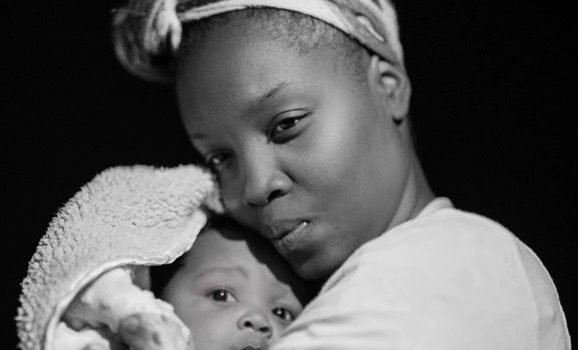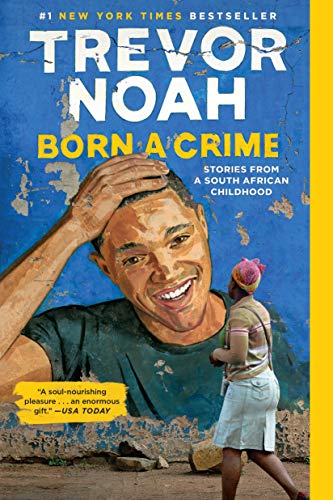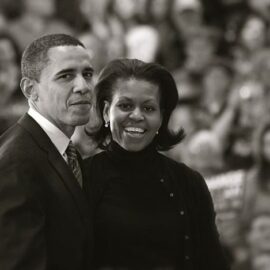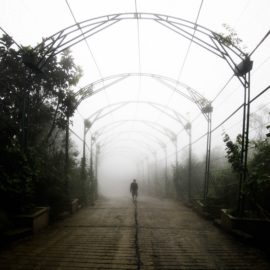

This article is an excerpt from the Shortform summary of "Born a Crime" by Trevor Noah. Shortform has the world's best summaries of books you should be reading.
Like this article? Sign up for a free trial here .
Who is Trevor Noah’s mom? In what ways did push the boundaries of apartheid and post-apartheid era South Africa? And how did she shape the comedian into the success he is today?
Trevor Noah’s mom is Patricia Noah. She chose to give birth to Noah as an act of protest during apartheid and raised Noah primarily on her own. Trevor Noah’s mom taught him to be assertive, creative, and independent.
Learn how Patricia Noah’s early life turned her into the woman she became, and how her relationship with Trevor developed over the years.
Early Life: Trevor Noah’s Mom
Trevor Noah’s mom, Patricia, like Noah, never felt a true sense of belonging growing up. She was a troublemaker as a child, already stubborn, and rebellious. Her mother didn’t think Patricia acted like a girl should act.
As neither the eldest daughter nor a son who would carry on the family name, she wasn’t significant in her family structure. She and her mother were always at odds.
Patricia Goes to Live With Relatives
When Patricia was nine, she requested to live with her father. Her mother complied, but instead of taking her in, her father sent her to live with his sister in Transkei, the Xhosa homeland. She wouldn’t reunite with any of them for 12 years.
At her aunt’s house, she lived with 14 cousins in a hut, all from different parents. They were also children whose parents didn’t want them around or couldn’t afford them.
In Transkei, so little land had been allocated by the government, the residents were crammed in. There was no water or electricity. The land was overrun and the soil infertile. Money was scarce, so most families subsisted through low-level farming.
Patricia was only taken in to help work the fields. There was barely enough food for all the children to eat. When they did have food, she had to fight the others for it. When they didn’t, she would steal food from the animals: whatever scraps she could scrounge. Sometimes, she ate dirt just to feel something in her stomach.
The only saving grace in Transkei was the still-operational missionary school, where Patricia was able to learn English. She learned to read and write, and when she was old enough, she went to work in a factory close by. As compensation, she received a meal. To Patricia, it was the best meal of her life because she’d earned it and didn’t have to rely on anyone else.
When her aunt became sick, Patricia went back to Soweto and enrolled in the secretarial school that would change her life. She was 21. Her move to Johannesburg a year later was to escape what she called the “black tax,” or the destiny of poor blacks who have to make up for the past degradation of their families. She knew that if she stayed in Soweto, she’d never make it anywhere, no matter how hard she tried, because she’d always be stuck trying to bring everyone in her family out of poverty.
Young Adulthood: Trevor Noah’s Mom
Many aspects of Patricia’s life at that time were illegal. During apartheid, there were few jobs available for blacks. Men worked as manual laborers on farms, in factories, or in mines, and women worked in factories or as domestic workers. But Patricia was never one to conform.
As a young woman living in the township of Soweto with her family, she took a typing course. Skilled jobs or executive positions were reserved for whites, making her efforts seem futile. But the government, under pressure from international communities regarding the unjust nature of apartheid, rolled back the restrictions on labor in the 1980s. White business owners could now hire “diversity hires,” or the token black person, in clerical positions low on the corporate ladder. Patricia was able to find secretarial work for a large pharmaceutical company located in a suburb of the rich white area of Johannesburg.
It was forbidden for blacks to live in Johannesburg. But Patricia had grown tired of life in Soweto. So, one day, she packed what little belongings she had and moved to Johannesburg. She was 22.
Trevor Noah’s Mom Hides in Plain Sight
Patricia had to find a way to live in a city that forbade it. At first, she slept in public restrooms. Then, she met a few Xhosa prostitutes who helped her learn how to live in the city. The women helped Patricia disguise herself as a maid so she could walk around undetected. They helped her meet white men who were willing to rent apartments to black women for a price, which was often not monetary. Fortunately, Patricia made enough from her job to pay rent and didn’t have to barter with her body.
She was often caught and arrested. Black maids were forced to carry documentation validating their labor status and right to move around the city, which other laborers were not allowed to do. Patricia didn’t have this documentation, but she always had money to pay the fine. She would be released from jail and go back to doing the same thing.
Patricia Noah’s Protest
Patricia’s apartment was in a culturally active, artistic community called Hillbrow. This location was more liberal and home to whites who disapproved of or didn’t care about apartheid. One of these people was a Swiss-German named Robert.
Robert was almost twice Patricia’s age, and their relationship was more friendship than lovers. Still, one night, she propositioned him about having a child. Not only was having Robert’s baby a form of resistance for Patricia, it was also advantageous. She wanted a baby, not a marriage, and Robert said he didn’t want a child. Also, because it was illegal, he could have no legal claim to the baby. He said no many times before finally conceding.
On February 20, 1984, Patricia gave birth to Noah. She told the doctors the father was from a different country to explain Noah’s complexion. Despite their dubiousness, the doctors accepted her story because they had to fulfill the requirements of race and nationality on the birth certificate. On Noah’s birth certificate, there is no one listed as his father and his nationality simply says “another country.”
Patricia Conceals Her Crime
It was dangerous for Trevor Noah’s mom Patricia to be seen with a mixed child. As a baby, she could wrap him up in a swaddle to hide him, but as Noah grew bigger, hiding him became problematic.
She found a solution. Patricia acted as if Noah was a colored child, meaning he had colored parents, which wasn’t illegal. She sent him to a colored daycare and found a colored woman in her building who agreed to pretend to be Noah’s mother when they went out. Patricia would act as the maid. If Patricia had to take Noah out alone, she’d have to pretend he wasn’t hers if any police were around.
Motherhood: Patricia’s Strength
After apartheid ended, Trevor Noah and his mother, Patricia, would often drive through their community of Eden Park amidst fires and rioters in the streets. Most of their neighbors hid from the violence, but not Patricia. She had a life to lead, and she wasn’t about to allow the violence to get in her way. Trevor Noah’s mother Patricia was stubborn, brazen, and brave, qualities Noah admired in his mother. On one Sunday morning when Noah was nine, he would find out just how fierce his mother was.
Trevor Noah’s Mom Throws Him From a Moving Bus
It was on one of these Sundays when Trevor Noah’s mother threw him out of a moving vehicle to save him from a violent encounter. Here’s how the story began. Patricia owned a used VW Beetle that broke down constantly. That morning was no different. Without a car, Noah, Patricia, and his infant brother, Andrew, were required to take a minibus.
The bus Noah and his family took home that night was driven by a Zulu man, the natural enemy to his mother’s Xhosa heritage. It is worth noting that within the Zulu tribe, Xhosa women were stereotyped as being promiscuous and wild. The driver, recognizing Patricia as Xhosa, became verbally aggressive, lecturing her about having children by different fathers (Andrew’s father was black, Noah’s white, and their different skin tones made it apparent).
Patricia argued with the driver, telling him to mind his own business. In response, the driver decided to teach her a lesson. He hit the accelerator and took off, refusing to stop—essentially kidnapping them. Patricia tried to reason with the driver, but she knew it was futile. The tensions between the two tribes were too significant. Violence was likely and could include assault or even death.
Patricia told Noah to get ready to jump at the next intersection, when the driver was forced to slow down. Noah, being exhausted from the day of traipsing from church to church, had fallen asleep. So, when the next stop came and he didn’t react, Patricia opened the door and threw him out, following behind with Andrew wrapped tightly against her chest.
Noah awoke with the pain of hitting the pavement, and Patricia landed in a way that shielded Andrew from the impact. She jumped up and yelled for them to run, and they ran until they were safe. Noah was incredulous that she’d thrown him out of a moving vehicle. But he came to realize how close they’d come to being casualties of the tribal war. Patricia’s strength and bravery had saved his life.
Trevor Noah and Patricia: Partners On A Grand Adventure
Noah and Patricia were like two partners on an expedition, forging into a new world. At six, Noah learned to drive on a stretch of desolate road. They’d fly down hills and back up the other side at great speeds, like a rollercoaster. They ventured into the world, exploring parts of the city and country where they didn’t have to spend money. She’d take Noah on picnics of baloney and butter on brown bread, eating while admiring the landscape. That sandwich is still a favorite of his to this day.
As impoverished as they were, Noah never felt poor because of the life experiences she opened him up to. Patricia raised him in a world where limitations were invisible, or as Noah put it, how a white kid might be raised. In their world, everything was possible, and his voice and ideas were important. She showed him that there were dreams beyond the confines of his race and culture.
Many people would tell her she was crazy and ask why she was wasting all this time teaching her son about the world. Each time, Patricia would counter with, “Even if he never leaves the ghetto, he will know that the ghetto is not the world.”
Trevor Noah’s Mom Pranks Him
One day, when they were shopping for groceries, Noah started nagging his mother to buy him a toffee apple. He followed her around the store begging and begging. Patricia ignored his whining until she was finished shopping. She finally told him to grab a toffee apple and meet her at the checkout line. Noah came back and set the apple on the counter, proudly telling the cashier to add it to his mother’s purchases.
Because Noah and his mother were so different in color, the cashier assumed they weren’t together. He told Noah to wait his turn. But Noah protested, saying Patricia was going to buy it. Patricia looked at him like he was a stranger and told the cashier that this poor colored boy must have lost his mother. She paid for her groceries and left the store. Noah, dumbfounded, ran after her in tears. When they met at the car, she had a good laugh.
Patricia Noah and Abel
After Patricia met Abel at the garage where she took the Beetle, she and Noah would visit him often. Noah was six and didn’t understand adult behavior, but he knew this man was suddenly part of their lives.
Abel was tall, with strong arms and large hands. He was moderately handsome, funny, and charismatic. He always helped whoever was in need. The world knew him as a good man. But at home, he was abusive.
When Patricia told Noah she was marrying Abel, he tried to talk her out of it. He wasn’t angry or jealous. He just had an inclination that Abel was bad news. Patricia married Abel anyway.
Patricia Noah’s Years of Abuse
She eventually moved into her own bedroom for a year or two. Abel was becoming increasingly abusive. She finally moved into a shed in the backyard, but she remained in her marriage to Abel.
Noah stopped calling and visiting. As much as he hated Abel, his anger was directed more at Patricia. He blamed her for staying and choosing to be abused. He was too young to understand domestic violence or how it affects people. Noah didn’t realize the predicament Patricia was in. Abuse was part of life for African women.
The last time Noah fought with her about Abel, she told him if she tried to leave, he would kill all of them. She was calm when she said it, matter-of-fact. Noah never mentioned it again.
Patricia did finally leave Abel, though. Noah doesn’t know why because he wasn’t around. He had started working as a comedian and was traveling more. Patricia bought a different house in the same neighborhood and met someone new.
Abel Shoots Trevor Noah’s Mom
Life moved forward for years for Patricia and the younger boys. Then, one Sunday, she was coming home from church with her new husband and his family, her two sons included, when Abel got out of the car with his gun.
Abel pointed the gun at Patricia, telling her she ruined his life. Andrew stepped up and tried to reason with Abel, as he’d always been able to do. Abel had always listened to Andrew, but this time, Abel threatened to shoot him. Andrew could see it was a real threat and stepped aside.
Abel started shooting, and Patricia jumped in the way to protect the others. She was hit in the bottom and collapsed. She yelled for everyone to run.
Patricia was on the ground trying to get up when Abel pointed the gun directly at her head. He pulled the trigger, but nothing happened. He tried again. Another misfire. He kept trying to pull the trigger, but the gun kept malfunctioning.
When Abel became distracted by the gun, Patricia pushed him and ran for the car. Andrew jumped in beside her. Just as she got the car started, another shot rang out, and Patricia’s blood splattered the windshield. Abel shot her in the back of the head through the rear window. Andrew pulled her out of the way and got behind the wheel. He drove straight to the hospital.
Patricia Noah at the Hospital
Noah was able to see Patricia in the ER. He lost it at the sight of her covered in blood, a hole in her face, and part of her nose missing.
The doctor came out after examining Patricia and didn’t know what to say. She’d survived nothing short of a miracle. Both bullets had passed through her body without hitting any major organs, arteries, veins, or nerves.
Patricia’s injuries changed the severity of the charge against Abel, and he was only accused of attempted murder. Abel took a plea deal and spent no time in jail. He got to maintain joint custody of his sons. He still lives somewhere in Johannesburg, not too far from Patricia.
But Trevor Noah’s mom seems to be doing well. And Noah, naming his Netflix comedy special, “Trevor Noah: Son of Patricia” after her, clearly feels indebted to her for much of his success in life.
———End of Preview———

Like what you just read? Read the rest of the world's best summary of "Born a Crime" at Shortform . Learn the book's critical concepts in 20 minutes or less .
Here's what you'll find in our full Born a Crime summary :
- Why Trevor Noah's birth was an illegal crime
- How Trevor's single mother was the beacon of strength in his life
- How Trevor ultimately broke out and achieved success






